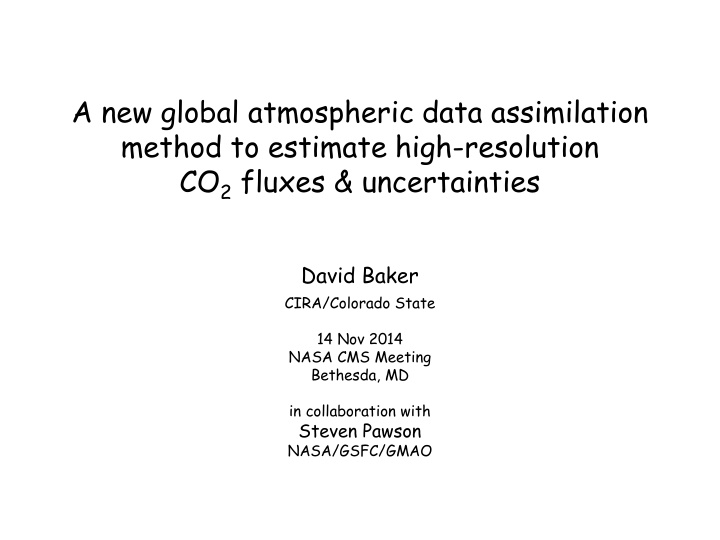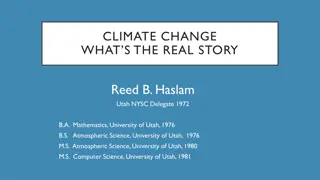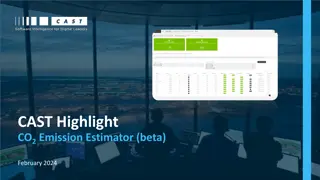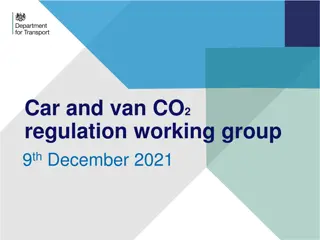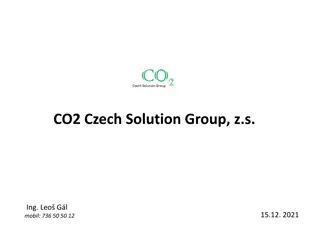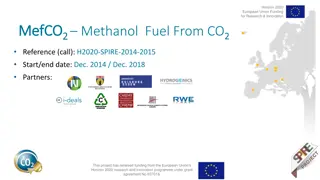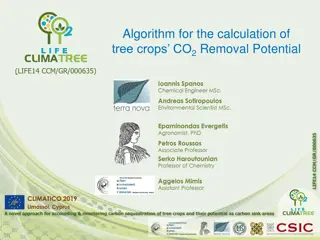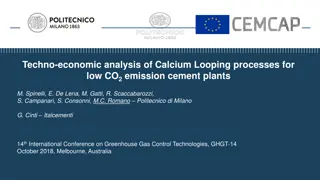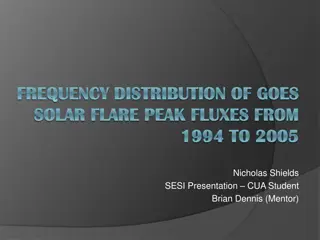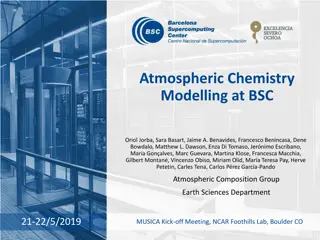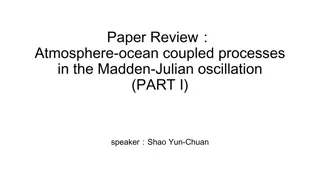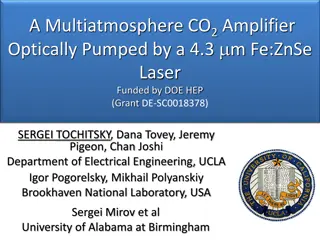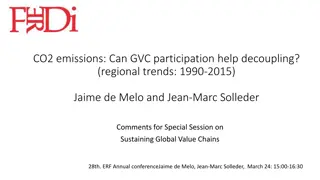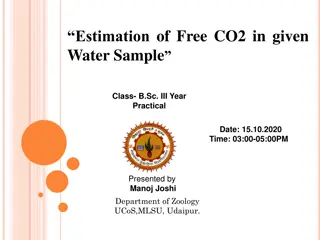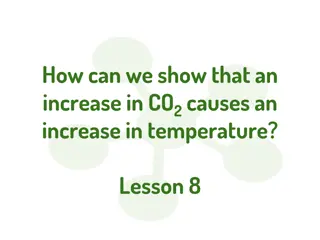Estimating High-resolution CO2 Fluxes with New Global Atmospheric Data Assimilation
Collaborating with NASA, David Baker presents a novel method to estimate CO2 fluxes at a high spatial resolution, addressing uncertainties and the need for mesoscale data assimilation. The research explores the benefits of mesoscale flux estimation, the limitations of current approaches, and proposes a solution to enhance flux estimations. By shifting focus to measurement space and employing advanced techniques, the study aims to improve the accuracy and efficiency of calculating CO2 fluxes on a global scale.
Download Presentation

Please find below an Image/Link to download the presentation.
The content on the website is provided AS IS for your information and personal use only. It may not be sold, licensed, or shared on other websites without obtaining consent from the author.If you encounter any issues during the download, it is possible that the publisher has removed the file from their server.
You are allowed to download the files provided on this website for personal or commercial use, subject to the condition that they are used lawfully. All files are the property of their respective owners.
The content on the website is provided AS IS for your information and personal use only. It may not be sold, licensed, or shared on other websites without obtaining consent from the author.
E N D
Presentation Transcript
A new global atmospheric data assimilation method to estimate high-resolution CO2fluxes & uncertainties David Baker CIRA/Colorado State 14 Nov 2014 NASA CMS Meeting Bethesda, MD in collaboration with Steven Pawson NASA/GSFC/GMAO
x What spatial resolution is required for useful MRV work? Good resolution target (needed for smaller countries) Good starting point (probably an acceptable resolution for much of world / larger countries) Current global inversions 4 x 4 1 x 1
Mesoscale CO2 fluxes & uncertainties from global inversions Estimate fluxes at the ~25 km resolution of current global meteorological analyses (GEOS5, GFS, etc.) Benefits: Better representation of flux processes Better attribution of flux between countries Better representation of measurements Why aren t we doing this already? Satellite data are not sufficiently dense yet Current atmospheric transport models & inversion methods are too slow
Current 4Dvar approach: too slow for high-res Variational data assimilation (4Dvar) not readily parallelizable*, due to its iterative nature Runtimes for a global 5-year satellite assimilation case (with 50 minimization steps): 0 Initial flux estimate x0 1 2 4 x 4 : 8 days 1 x 1 : ~500 days x : ~90 years (each factor of 2 increase in horizontal resolution increases the runtime by at least 8x ) Also, 4Dvar gives only a low-rank covariance matrix ( a very coarse resolution uncertainty estimate) x1 x2 Final flux estimate 3 x3 *The underlying atmospheric transport model can and should be parallelized as much as possible, e.g. with domain decomposition; here we look at parallelizing the inverse method Minimum of cost function J
Solution: solve in measurement space with Bennett s representer method Estimate fluxes x that minimize: Instead of solving in flux space: solve in measurement space: in two steps: along with covariance: Each column of representer matrix formed by running a single unit measurement pulse backward and forward IN PARALLEL Flux correction formed as a linear combo of adjoint-run flux perturbations PoHT
Ways to implement and speed up the method Group measurements into blocks: Needed when using satellite data Choose number of groups to allow [HPoHT+R] to fit into memory Run basis functions quickly at reduced resolution after initial (high- res) pulse spreads out due to mixing: No need to store full 3-D CO2 fields store only 2-D flux corrections and 3-D field sampled at measurement locations For problems with many measurements, use as a pre-conditioner for standard iterative 4Dvar (to fine-tune flux details inside the region of each measurement group)
High-resolution flux uncertainties Both current 4Dvar and EnKF methods give a reduced-rank covariance of O(100). If then the number of columns in C is given by: The number of ensemble members in the EnKF 2x the number of descent iterations in the 4Dvar s BFGS minimization In the representer method, the covariance is full rank, with the rank set by the dimension of the matrix that can be inverted by the computer, O(10,000) say Extra detail will help converge the iterative 4Dvar faster At what spatial scales will this higher-rank covariance provide useful error estimates?
